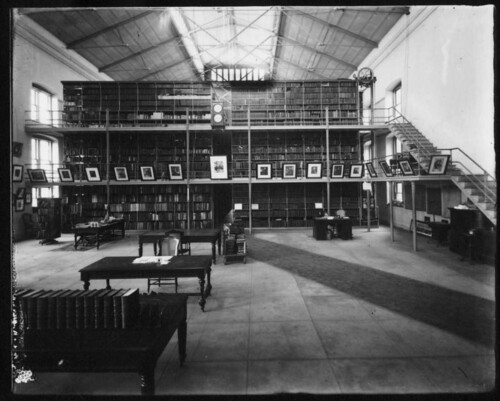National Museum of Health and Medicine
National Museum of Health and Medicine: "The National Museum of Health and Medicine, a division of the Armed Forces Institute of Pathology, was founded as the Army Medical Museum in 1862 to study and improve medical conditions during the American Civil War. The Museum houses a collection of over 24 million items including archival materials, anatomical and pathological specimens, medical instruments and artifacts, and microscope slide-based medical research collections. The collections focus particularly on the history and practice of American medicine, military medicine, and current medical research issues. Today the Museum floor features exhibits on Civil War medicine including artifacts documenting the death of Abraham Lincoln; evolution of the microscope and medical instruments; a hologram of the human body and a computer interactive station of the anatomy allowing visitors to view the human body from a 3-D perspective."
Flickr: otisarchives1's Photostream
This is an unoffical home for public domain photographs from the National Museum of Health & Medicine.
For additional information, please visit the National Museum of Health and Medicine Web site.
Historical Collections | n m h m: "Mission Statement
The Division of Historical Collection acquires and preserves both artifacts of record and of note documenting the history of the practice of medicine, innovations in biomedical research and the evolution of medical technology. The collection emphasizes the role of the Armed Services of the United States, United States Public Health Service and the United States federal government as it relates to the above themes. The collection is made available for the education of medical professionals, Department of Defense personnel, historians and the public through exhibits in the museum, loans to other institutions and individualized
study."

Interior of Surgeon General's library. After spending decades as the Army Medical Museum & Library, this became the National Library of Medicine.
Flickr: otisarchives1's Photostream
This is an unoffical home for public domain photographs from the National Museum of Health & Medicine.
For additional information, please visit the National Museum of Health and Medicine Web site.
Historical Collections | n m h m: "Mission Statement
The Division of Historical Collection acquires and preserves both artifacts of record and of note documenting the history of the practice of medicine, innovations in biomedical research and the evolution of medical technology. The collection emphasizes the role of the Armed Services of the United States, United States Public Health Service and the United States federal government as it relates to the above themes. The collection is made available for the education of medical professionals, Department of Defense personnel, historians and the public through exhibits in the museum, loans to other institutions and individualized
study."

Interior of Surgeon General's library. After spending decades as the Army Medical Museum & Library, this became the National Library of Medicine.




0 Comments:
Post a Comment
<< Home